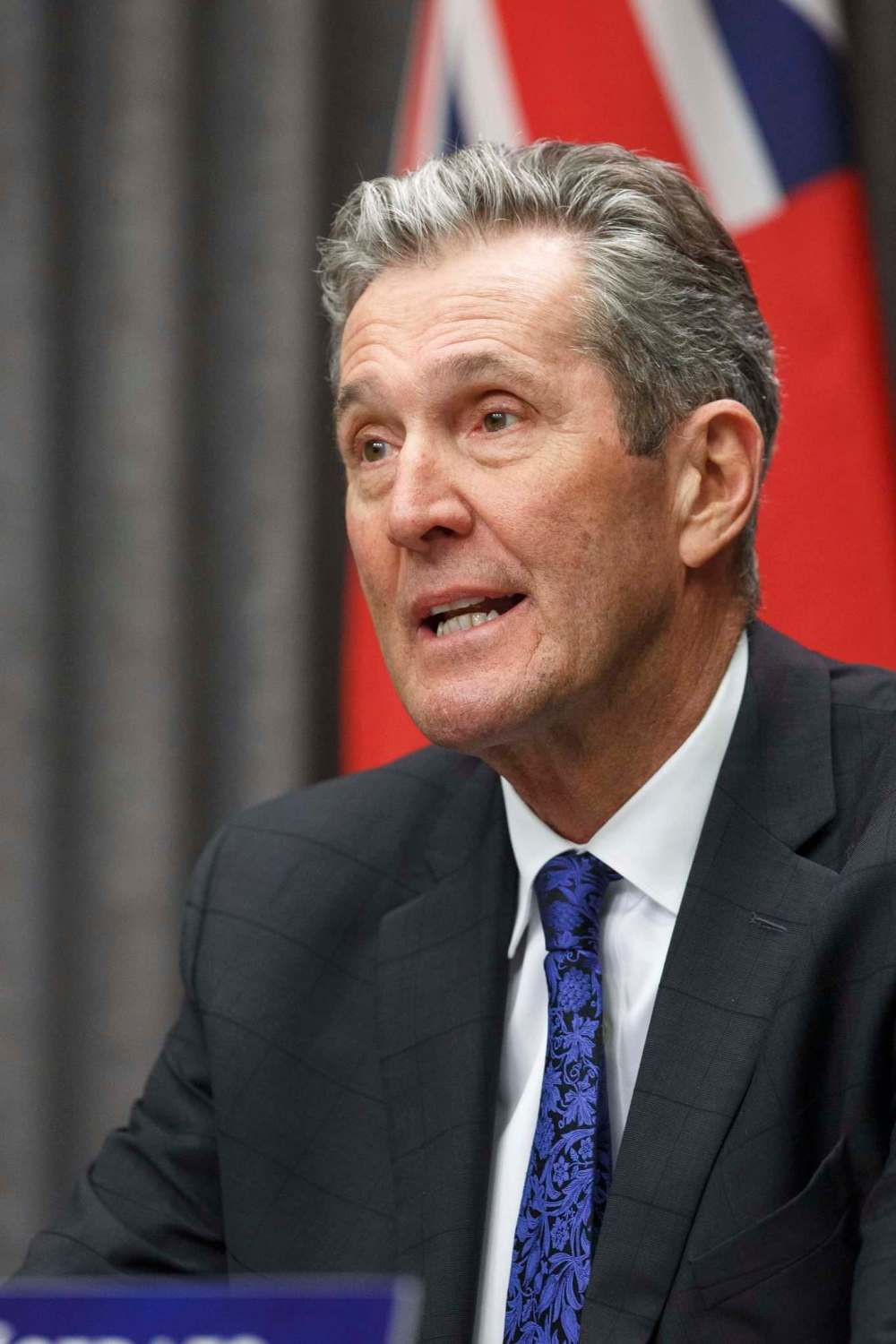New year may bring darker shade of pandemic blues
Read this article for free:
or
Already have an account? Log in here »
To continue reading, please subscribe:
Monthly Digital Subscription
$0 for the first 4 weeks*
- Enjoy unlimited reading on winnipegfreepress.com
- Read the E-Edition, our digital replica newspaper
- Access News Break, our award-winning app
- Play interactive puzzles
*No charge for 4 weeks then price increases to the regular rate of $19.00 plus GST every four weeks. Offer available to new and qualified returning subscribers only. Cancel any time.
Monthly Digital Subscription
$4.75/week*
- Enjoy unlimited reading on winnipegfreepress.com
- Read the E-Edition, our digital replica newspaper
- Access News Break, our award-winning app
- Play interactive puzzles
*Billed as $19 plus GST every four weeks. Cancel any time.
To continue reading, please subscribe:
Add Free Press access to your Brandon Sun subscription for only an additional
$1 for the first 4 weeks*
*Your next subscription payment will increase by $1.00 and you will be charged $16.99 plus GST for four weeks. After four weeks, your payment will increase to $23.99 plus GST every four weeks.
Read unlimited articles for free today:
or
Already have an account? Log in here »
Hey there, time traveller!
This article was published 11/12/2020 (1827 days ago), so information in it may no longer be current.
January could become COVID-19’s deadliest month.
Nearly one-third of Canadians plan to visit family and friends over the holidays, according to an Angus Reid Institute poll released this week. (The number is lower in Manitoba, at 20 per cent).
Some intend to travel outside their home province, despite strong recommendations by public health officials not to do so.
What specific impact that will have on Manitoba’s COVID-19 infection rate is unknown. It will depend in part on how much risk people are willing to assume, and how well they understand the consequences of their actions.
Without strict adherence to existing public health orders, modelling in Manitoba shows the transmission of the novel coronavirus could rise sharply by Dec. 31. Even minor, time-limited lapses in social distancing over the holidays would likely see infection rates spike.
That’s not the only reason COVID-19 cases and deaths could soar in January.
The cold weather is another factor. As more people move indoors, the spread of the virus will intensify. Children will spend more time inside, including at school and in child care centres. People will be less likely to open windows to improve indoor air circulation.
Studies have shown even with social distancing, the aerosolization of SARS-CoV-2 indoors can result in transmission, especially where there is poor ventilation and prolonged contact.
Pandemic fatigue may be another factor. That’s not unique to the holiday season; it’s something that’s been growing over time. But as people become increasingly tired of pandemic restrictions, they may be less likely to follow them during the Christmas break.
Also, news this week Health Canada had approved a COVID-19 vaccine was a much-welcomed beacon of a hope. But it could lull some into a state of complacency.
If people feel a vaccine is just around the corner (it isn’t, most Manitobans won’t get their first shot for many months), they may be more inclined to let their guard down.
It’s been a tricky message for governments to manage. On the one hand, the distribution of an authorized vaccine is a positive development that needs to be communicated. On the other, it could give the impression the light at the end of the tunnel is closer than it really is.
Meanwhile, it doesn’t help the provincial government has claimed Manitoba’s pandemic situation has improved. It hasn’t.
“These restrictions are beginning to work,” Premier Brian Pallister claimed Wednesday, citing lower reported case numbers over the past few weeks.

It’s a misleading statement. The main reason the average number of reported cases of COVID-19 has dropped over the past month is because the province is conducting fewer tests (the average number fell from about 4,000 a day in mid-November to around 2,500/day this week).
The test positivity rate, which measures the percentage of those tested who are positive, has remained above 13 per cent since Manitoba went into code red Nov. 12 (up from 11 per cent).
Along with rising hospitalization numbers — which hit a record 388 on Friday, up 71 per cent from a month ago — and daily death counts — which have more than doubled over the past month — the situation is getting worse.
Instead of underscoring that and urging Manitobans to double down, government is trying to convince the public it is making progress. It is doing so because it has faced sharp criticism over the handling of the pandemic.
Such public relations boosterism could cause harm in the long run. If people believe the situation is improving, they may be less inclined to follow the rules.
All of this will likely fuel higher infection rates and record deaths come January.
It doesn’t have to. If there was a renewed sense of urgency that Manitoba needs to do a better job of containing the virus over the next few months (until there’s widespread distribution of a vaccine), a catastrophic January could be averted.
The province would need to show strong leadership to make that happen.
Right now, it appears the provincial government is willing to accept whatever comes under the status quo. It could make for an especially deadly winter.
tom.brodbeck@freepress.mb.ca

Tom has been covering Manitoba politics since the early 1990s and joined the Winnipeg Free Press news team in 2019.
Our newsroom depends on a growing audience of readers to power our journalism. If you are not a paid reader, please consider becoming a subscriber.
Our newsroom depends on its audience of readers to power our journalism. Thank you for your support.






